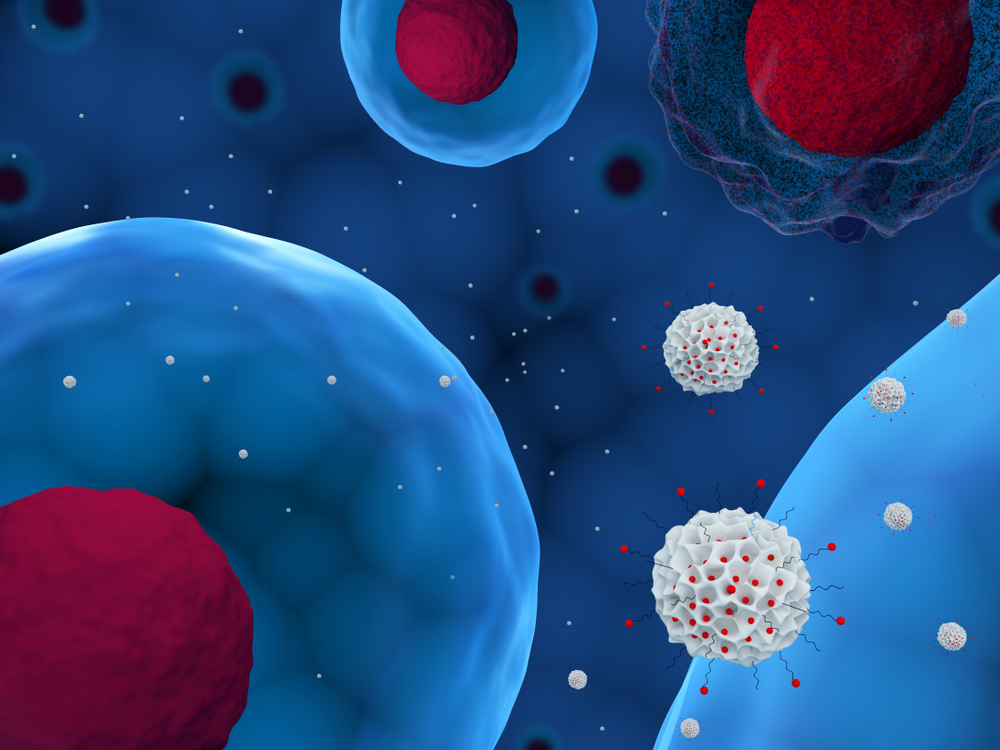Shift in Immune Cells’ Balance Linked to ALS Severity and Progression, Study Finds

A shift in the make-up of immune cells found in the blood of patients with amyotrophic lateral sclerosis (ALS) favors specific types of pro-inflammatory T-helper cells in detriment to anti-inflammatory regulatory T-cells, a study has found.
This change in immune cells’ balance is associated with disease severity and progression, and may be crucial to understand the importance of the immune system and inflammation over the course of ALS, researchers noted.
These findings were reported in the study, “Peripheral proinflammatory Th1/Th17 immune cell shift is linked to disease severity in amyotrophic lateral sclerosis,” published in Scientific Reports.
ALS is a progressive neurodegenerative disorder caused by the gradual destruction of motor neurons — nerve cells responsible for voluntary muscle control — in the spinal cord and brain.
It is widely accepted that microglia — nerve cells that support and protect neurons — found nearby play a crucial role in the destruction of motor neurons. Under certain circumstances these cells may become overactive, triggering inflammation in the central nervous system (comprised of the brain and spinal cord), and contributing to motor neuron degeneration.
Although neuroinflammation is recognized as one of the key players in the development of ALS, “so far it has been difficult to draw a conclusive picture about the involvement of the systemic immune response,” which plays a central role in autoimmune diseases like multiple sclerosis (MS), the researchers wrote.
In an attempt to tackle this issue, a team of German researchers analyzed the population of immune cells found in blood samples taken from 73 sporadic ALS patients and 48 healthy individuals (controls). In addition to immune cells’ composition, researchers also measured the levels of several cytokines — molecules that mediate and regulate immune and inflammatory responses — in patients’ blood serum.
ALS patients had higher levels of pro-inflammatory T-helper cells (Th1 and Th17 cells) and lower levels of anti-inflammatory T-cells (Th2 and regulatory T-cells), compared to healthy individuals.
T-cells are a wide population of immune cells that, depending on their function can be classified as belonging to different subtypes. Certain types of T-helper and regulatory T-cells are responsible for controlling and balancing immune and inflammatory responses in the body. However, they do so in different ways; while T-helpers such as Th1 and Th17 usually promote inflammation, Th2 cells and regulatory T-cells tone it down.
Statistical analyses found a moderate negative correlation between the levels of Th1 and Th17 cells and the scores of the ALS functional rating scale revised (ALSFRS-R, a measure of ALS severity and progression). A similar negative correlation also was found between the levels of these immune cells and the values of forced vital capacity (FVC, a measure of lung function).
This means that the levels of Th1 and Th17 cells increased with disease severity.
They also found the levels of other types of immune cells involved in innate immunity, including natural killer (NK) cells and monocytes, were higher in ALS patients compared to controls. (Innate immunity refers to the general response the immune system has against what it considers a threat.)
When researchers measured the levels of cytokines in participants’ serum, they found the levels of pro-inflammatory cytokines like interleukin-1 beta (IL-1 beta), interleukin-6 (IL-6), and interferon-gamma (IFN-gamma), were abnormally high in ALS patients compared to controls.
In contrast, the levels of anti-inflammatory cytokines, such as interleukin-10 (IL-10), were lower in patients compared to healthy individuals.
The team also analyzed immune cells’ composition in cerebrospinal fluid (CSF, the liquid that surrounds the brain and spinal cord) samples taken from a subgroup of 16 ALS patients and 10 healthy individuals. However, no significant alterations in immune cells’ composition were found compared to controls.
“In summary of all changes in immune cell types and cytokines we found, a significant shift of the peripheral immune system towards a pro-inflammatory cell-mediated immune response in ALS patients becomes obvious. Furthermore, correlation analysis to clinical characteristics revealed that Th1 and Th17 cells increased with clinical severity,” the researchers wrote.
However, the team noted that larger, prospective studies are needed to confirm these findings.
“Further longitudinal studies on functional properties of specific immune cells, especially including patients in early disease stages, are needed to explore the interplay of peripheral innate and adaptive immunity in more detail and the relevance for inflammation in the CNS compartment through the course of the disease,” they added.






